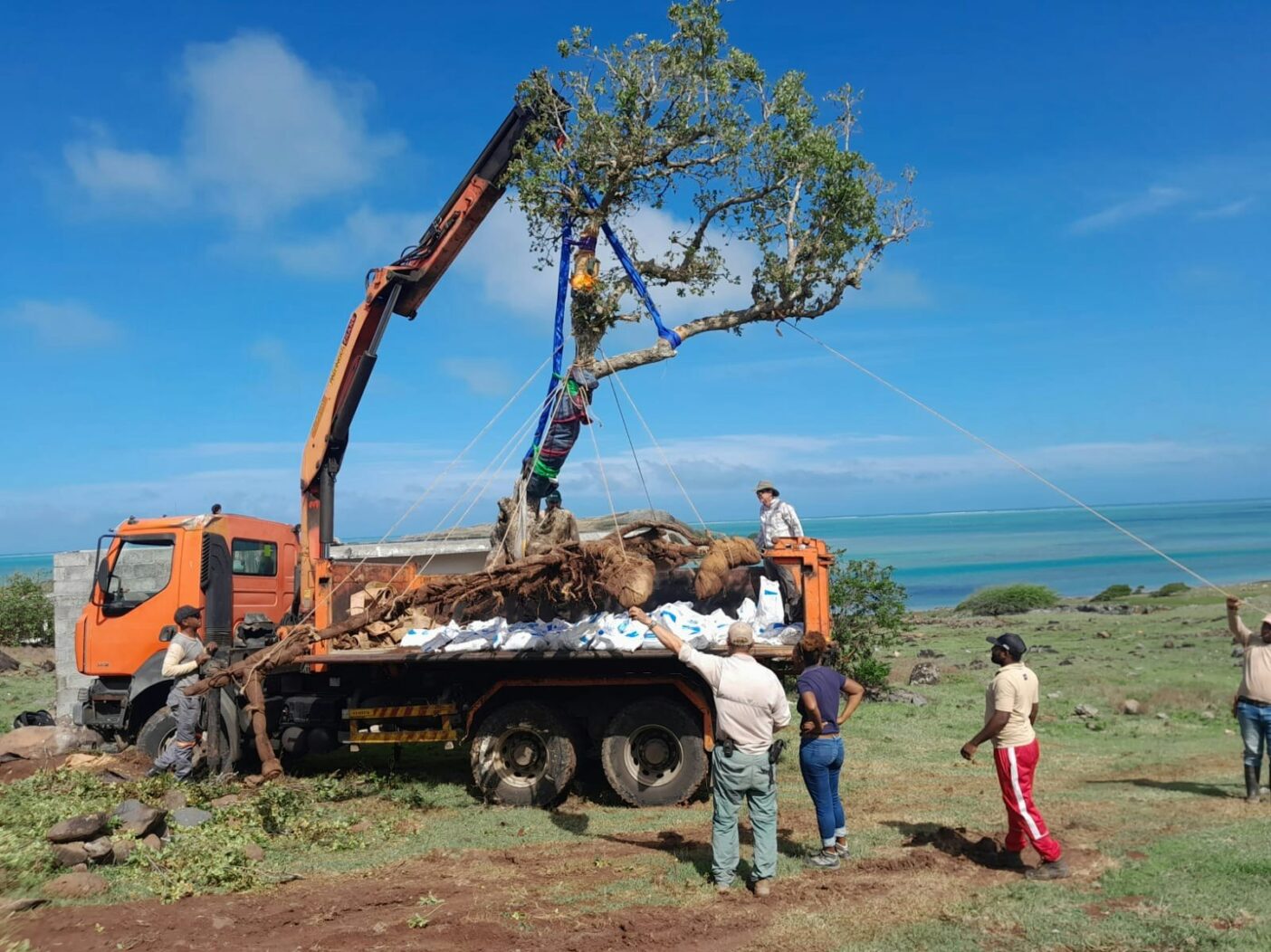
Garden Helps save five endangered trees on remote island
Vice President of Horticulture Brian Galligan and Associate Director of Landscape Maintenance Stephen Jurek recently flew to the other side of the world to manage the rescue of five trees, among the last of their kind, from an airport expansion project.
In late May, they arrived on Rodrigues Island to oversee the trees’ relocation to a nature preserve. Rodrigues is the very definition of “the middle of nowhere,” a 40-square-mile blip in the Indian Ocean, about 350 miles off Mauritius, which in turn is 700 miles from Madagascar, which lies 740 miles from Mozambique on Africa’s east coast.
When you’re in a place like that, you’d better be ready to improvise, make do, and get creative.
“We had to get shackles from the port authority,” Jurek says. “That tells you how little they are able to access things. They had to rely on the government for shackles.”
“Those shackles were probably so old they killed the last dodo bird!” Galligan interjects. The two laugh.
That was just the start of it. There were no shovels. The team instead used pipes welded to leaf springs—arched metal strips that are part of a vehicle’s suspension system—to dig out roots. There were no spigots or hoses; the crew had to drive to a desalination plant, fill a tank, and haul the water to the trees. Electrical wires dangled so low that the team had to lift them with bamboo poles to allow the truck’s passage. The multipurpose truck lacked the fixtures Jurek would typically use to tie down a large tree. The straps themselves were in short supply.
“It was MacGyver skills the whole time,” says Galligan, referring to the 1980s action series about the title character’s uncanny improvisational abilities.
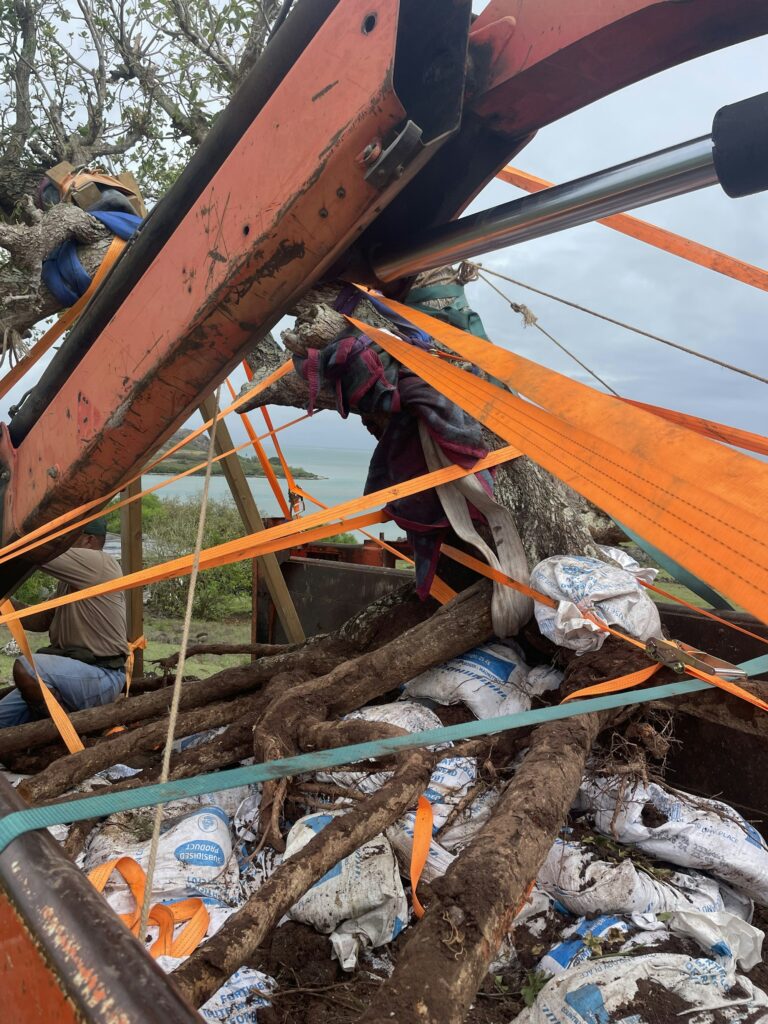
The tree-moving process started more than a year ago. At the recommendation of Botanic Gardens Conservation International (BGCI), the Mauritian Wildlife Foundation solicited the help of our staff, known for their tree-moving expertise. Galligan first went to Rodrigues in May 2023 to teach the Foundation team how to prune the trees’ roots, the initial step in the moving process. The procedure entails digging and exposing roots, cutting them to reduce their mass, bundling them, and applying a hormone to trigger the growth of new roots that will take hold once the tree is replanted. The trees remained in place for a year to stabilize and initiate the new roots. Now, it was time to transport them to a wildlife preserve a few miles away.
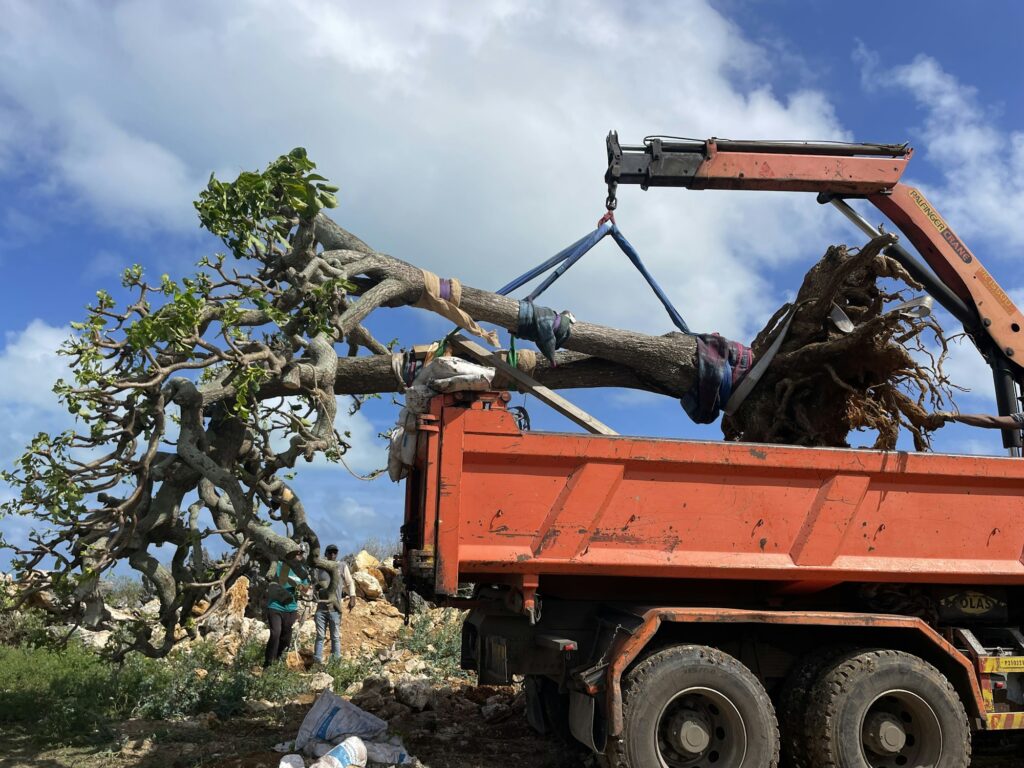
The Foundation sponsored Jurek for his machine-handling skills; Al O’Donnell, owner of O’Donnell Landscapes Inc. of Estero and the man who taught the Garden staff how to move trees, supported Galligan’s travel.
Even if Galligan and Jurek had access to the tools and technology to which they are accustomed, moving these trees would test the limits of their skills. Rodrigues is sunbaked and windswept. Its terrain is rocky and uneven; Galligan described it as “a moonscape of jagged shark tooth calcarenite limestone” in an article detailing his first trip.
In Naples, tree roots are shallow and symmetrical because the water table is near the surface and the terrain is flat. On Rodrigues, they burrow deep into the rocks seeking water and clinging to the side of hills. The roots can be lopsided because of the terrain and because the roots may favor the tree’s shadier, cooler side.
The group had to navigate around spiny cacti and a euphorbia species with sap so toxic it can blind. It rained, though the group agreed the unseasonable and surprise downpours were beneficial. The community called them “a gift from God” in support of the team’s work, Galligan says.

Language and cultural differences added to the challenges. Islanders speak French or Creole; a single member of the team spoke both languages plus English and translated nonstop. Galligan and Jurek learned to scale back their ambitious daily agendas to respect slower-paced, “island time” norms. The island team had to figure out when to let Jurek and Galligan head the effort and when to take the lead, which our experts had encouraged all along.
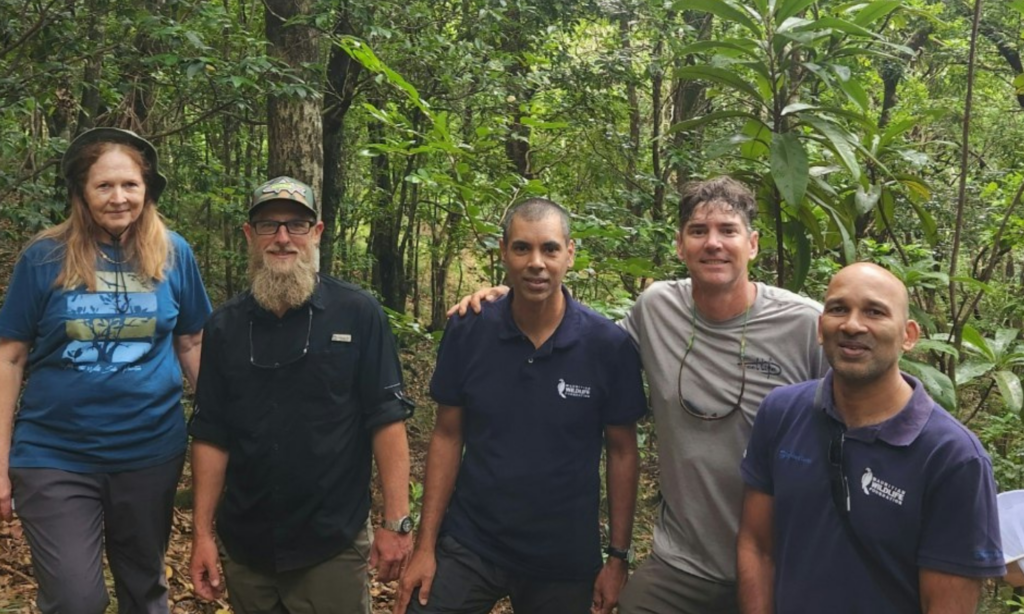
By the end of their time together, the group coalesced, moved the three most difficult trees, and prepared the final two for transplantation after the Garden staffers departed. It will take time to know whether the transplants were successful; remember, there is no manual for working with these rare trees in this remote place. In the weeks since Galligan and Jurek returned, the Foundation team has reported the trees are doing well.
“We got called for this project because of what we’ve accomplished over time here (in Naples),” says Jurek. “That’s the most gratifying thing for me.”
Galligan reflected on the species that had gone extinct on the island—the dodo bird, giant tortoises, and the Rodrigues solitaire, a flightless bird hunted to death in the 18th century.
“The neat thing is the skeletons of the solitaire bird and the tortoises were found in the nature preserve where we put the trees,” he says. “These trees were probably what they fed on before we made those species extinct. It’s neat to see that we were a little responsible for helping the trees live on.”
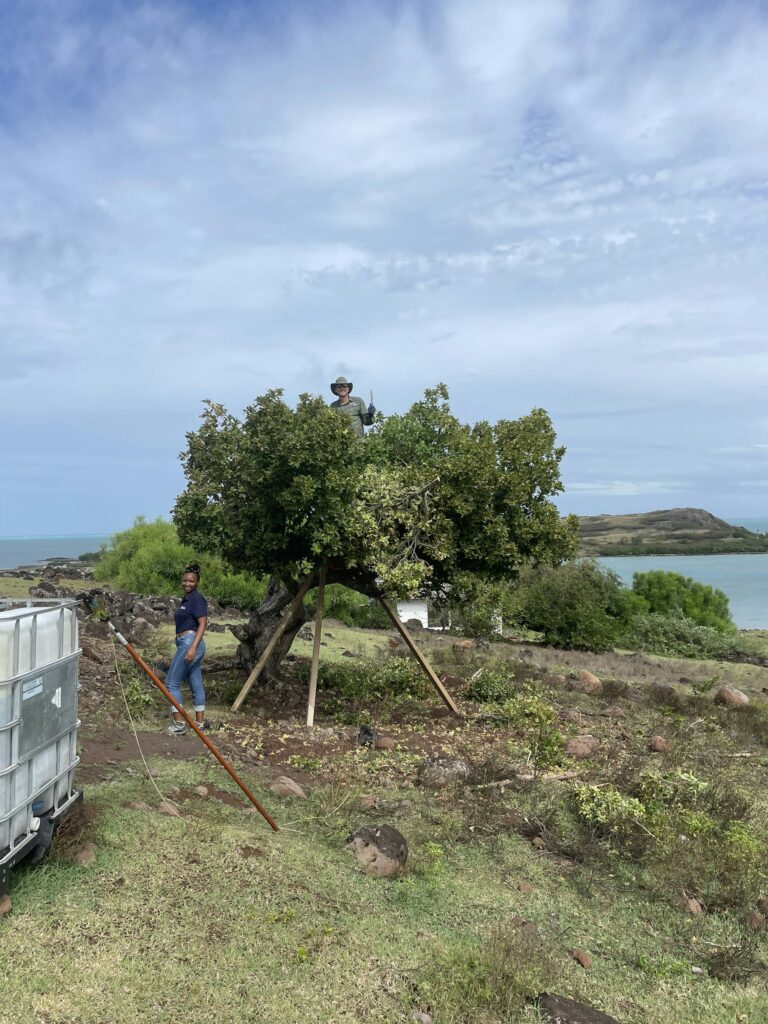
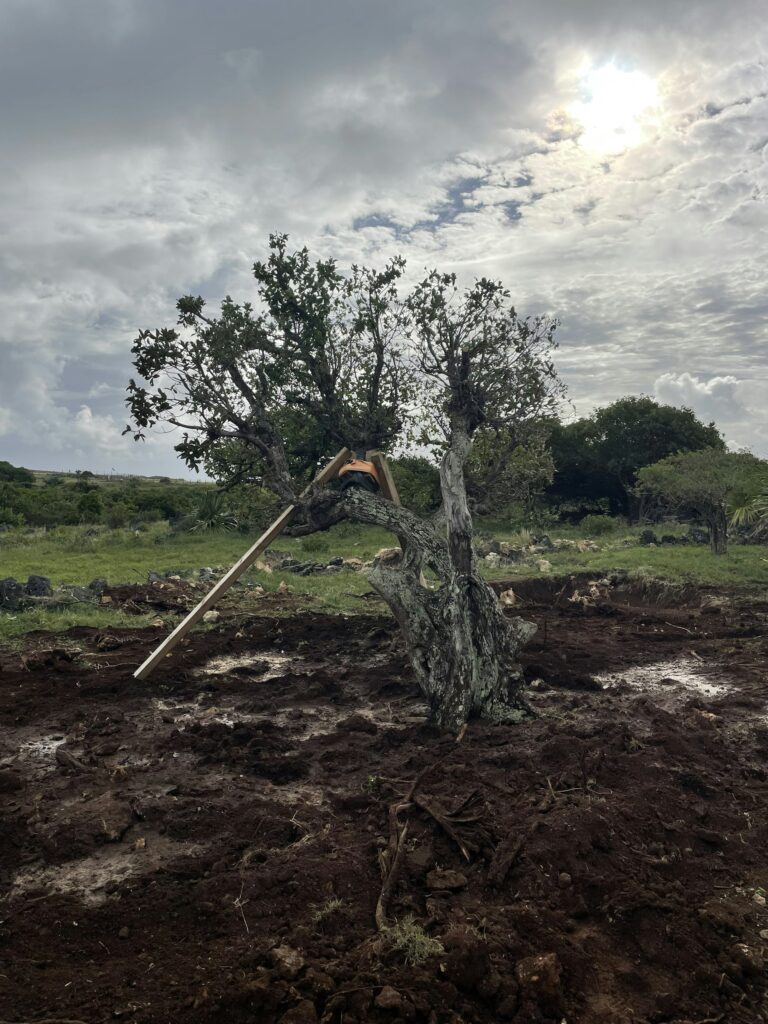
Species Saved
The team saved five trees representing four species:
Diospyros diversifolia: This tree is listed as Endangered under the International Union for Conservation of Nature’s Red List, which monitors plants and determines their status. There are about 460 trees documented on the island, mostly on nature preserves. Grazing, ranching, and farming are among the threats to those trees outside of protected areas.
Terminalia bentzoe subsp. rodriguesensis: This tree, found only on Rodrigues, was once abundant and then heavily harvested for its timber and medicinal uses. Today, it is listed as Critically Endangered.
Polyscias rodriguesiana: The IUCN reports just nine of these Critically Endangered species are left in the wild. The Mauritian Wildlife Foundation is actively working to propagate and plant new trees in protected areas.
Foetidia rodriguesiana: This species is also Critically Endangered, according to the IUCN, with just 57 mature specimens left in the wild.

About the Author
Jennifer Reed is the Garden’s Editorial Director and a longtime Southwest Florida journalist.

